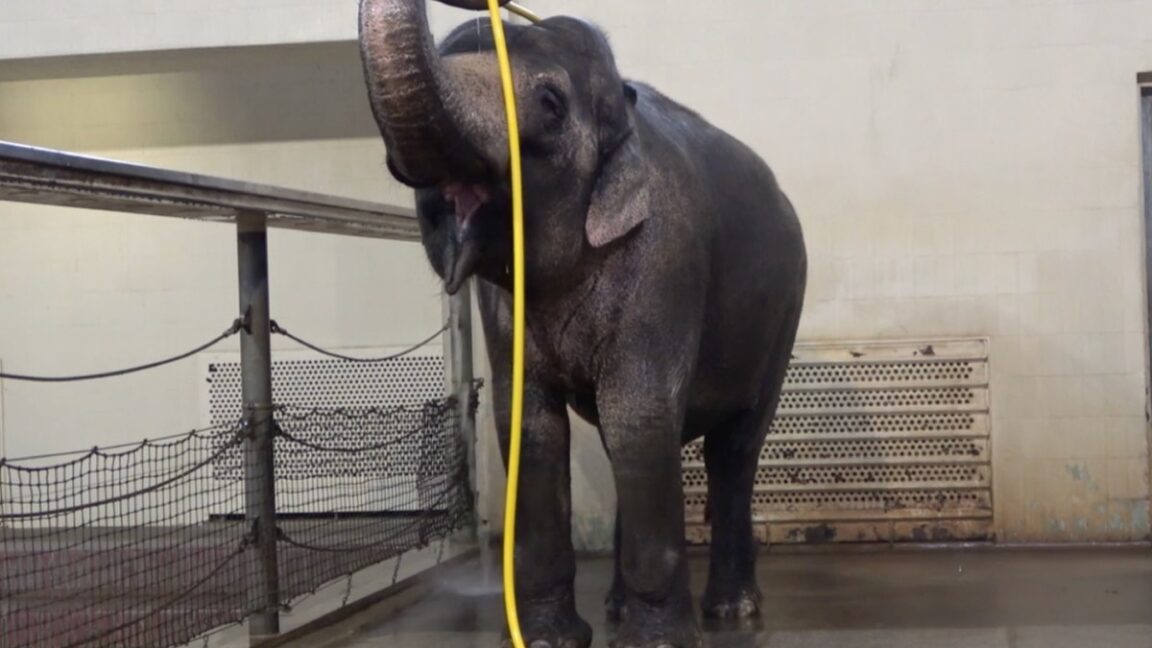
And the hose-showering behavior was “lateralized,” that is, Mary preferred targeting her left body side more than her right. (Yes, Mary is a “left-trunker.”) Mary even adapted her showering behavior depending on the diameter of the hose: she preferred showering with a 24-mm hose over a 13-mm hose and preferred to use her trunk to shower rather than a 32-mm hose.
It’s not known where Mary learned to use a hose, but the authors suggest that elephants might have an intuitive understanding of how hoses work because of the similarity to their trunks. “Bathing and spraying themselves with water, mud, or dust are very common behaviors in elephants and important for body temperature regulation as well as skin care,” they wrote. “Mary’s behavior fits with other instances of tool use in elephants related to body care.”
Perhaps even more intriguing was Anchali’s behavior. While Anchali did not use the hose to shower, she nonetheless exhibited complex behavior in manipulating the hose: lifting it, kinking the hose, regrasping the kink, and compressing the kink. The latter, in particular, often resulted in reduced water flow while Mary was showering. Anchali eventually figured out how to further disrupt the water flow by placing her trunk on the hose and lowering her body onto it. Control experiments were inconclusive about whether Anchali was deliberately sabotaging Mary’s shower; the two elephants had been at odds and behaved aggressively toward each other at shower times. But similar cognitively complex behavior has been observed in elephants.
“When Anchali came up with a second behavior that disrupted water flow to Mary, I became pretty convinced that she is trying to sabotage Mary,” Brecht said. “Do elephants play tricks on each other in the wild? When I saw Anchali’s kink and clamp for the first time, I broke out in laughter. So, I wonder, does Anchali also think this is funny, or is she just being mean?
Current Biology, 2024. DOI: 10.1016/j.cub.2024.10.017 (About DOIs).

